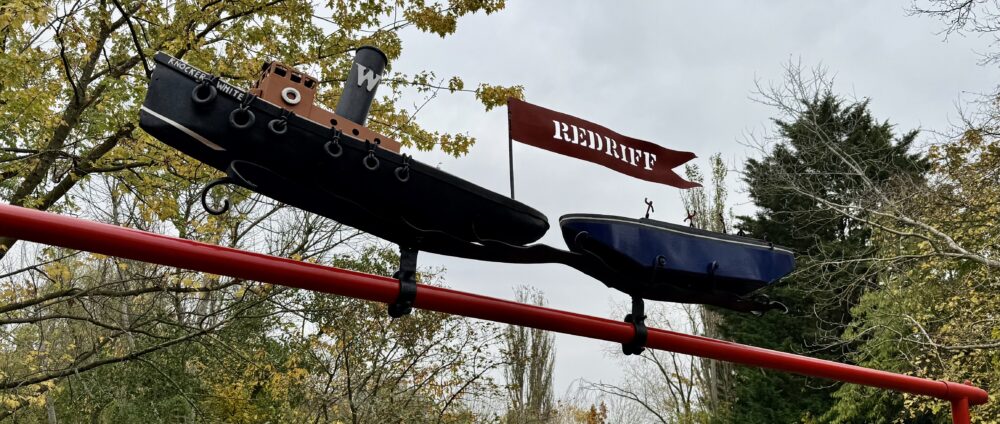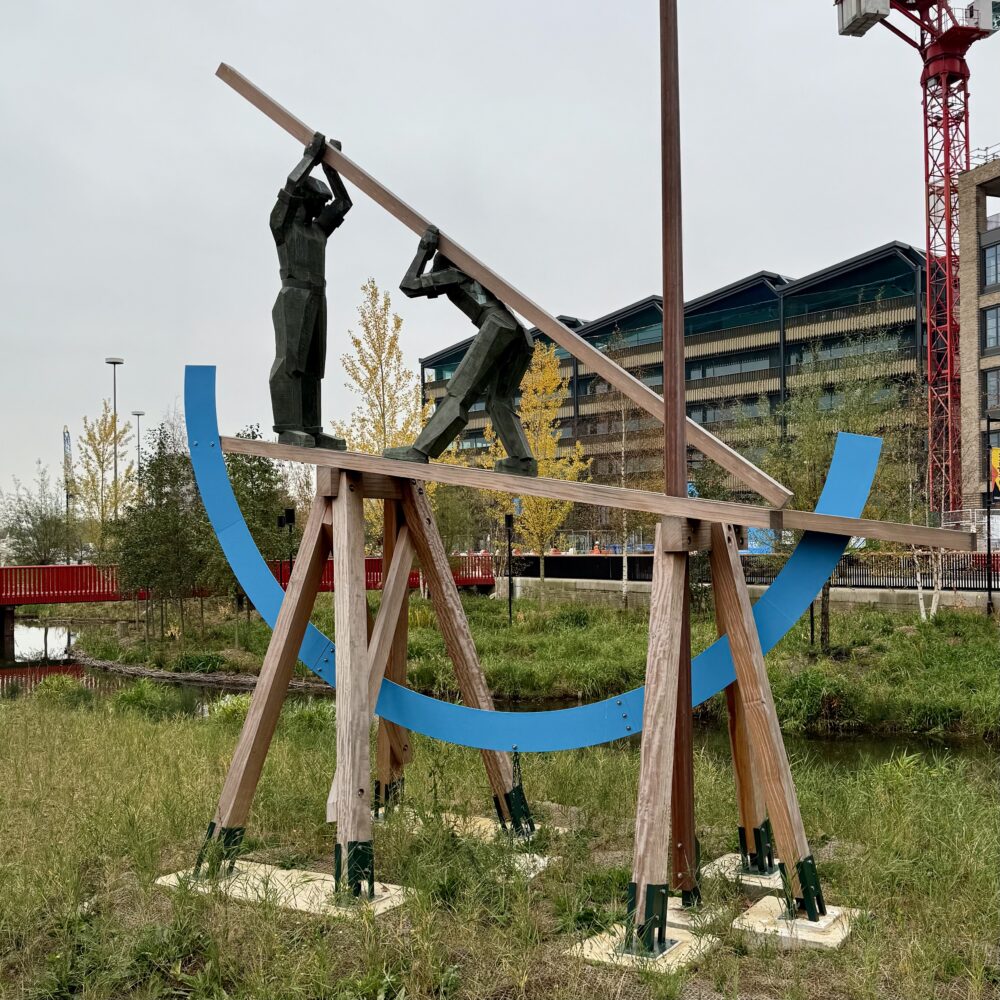Redriff

While we’re on refreshed artworks in Rotherhithe—and there’s a sentence I never imagined writing—this pair of boats made by Kevin Boys was recently unveiled on the refurbished Redriff Footbridge, replacing a previous artwork that had been stolen.
I would never have come across this spot had I not serendipitously wandered into the Russia Dock Woodland on an ‘I wonder where that path goes?’ whim.
After the closure of the Surrey Commercial Docks in the 1970s, Russia Dock was filled in—except for a little trickle of a stream. The surrounding area was planted to create a little woodland. Forty-odd years after it was completed, it’s become a 34-acre haven of nature in a formerly industrial area.
The filled-in dock sits at a lower level than the surrounding pathways, with the capstones still visible. This provides a nice link to its industrial past, but it did strike me that safety considerations might have prevented that design approach if the woodland were created today.
I’ve previously written about the many country parks in North East England, which stand as the beautiful legacy of our mining past, and I suppose this is a sort of industrial dock equivalent.
This post was filed under: Photos, Travel, Kevin Boys, London, Rotherhithe.
